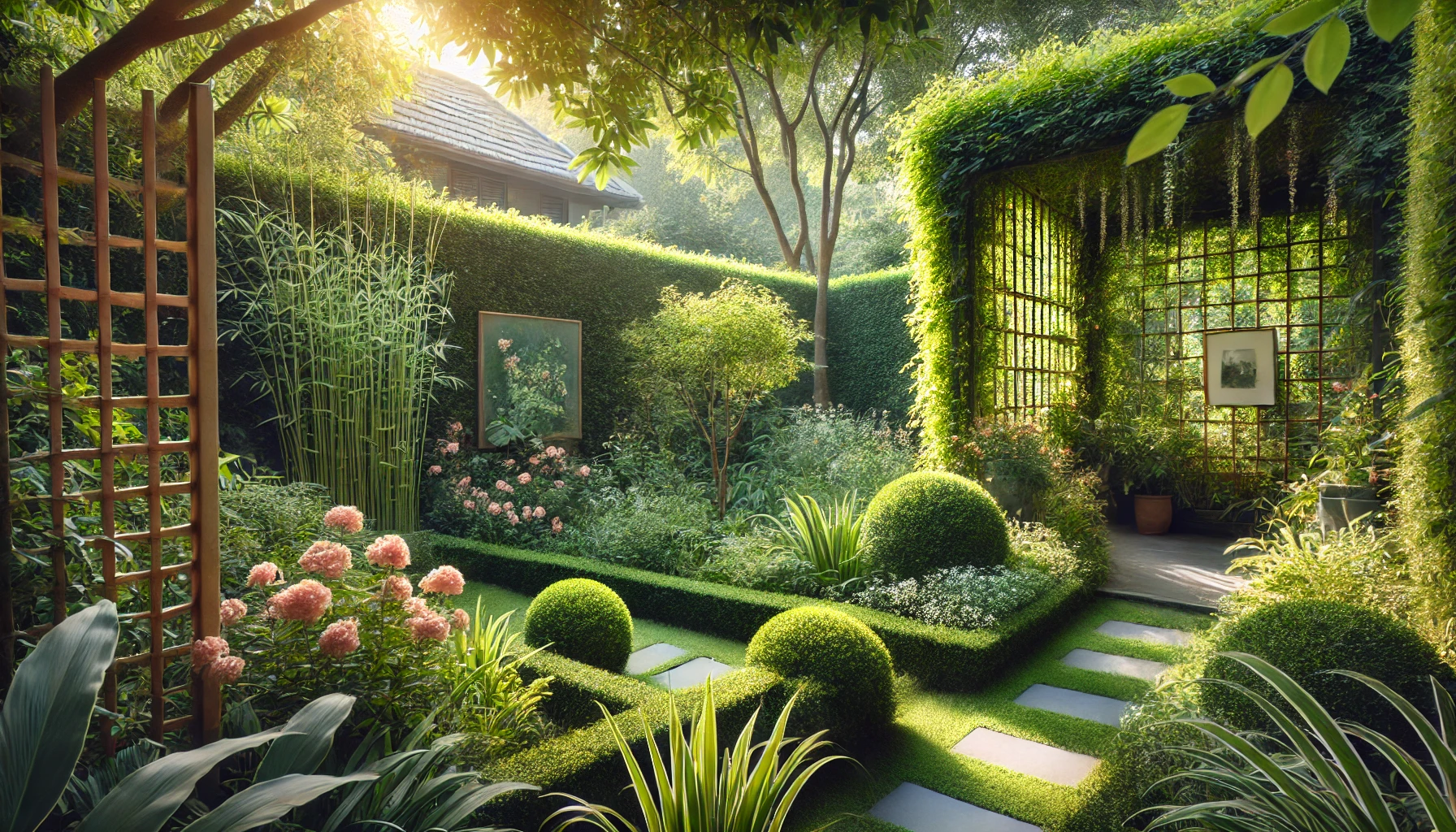Creating natural dividers in your garden is a great way to delimit spaces, ensure more privacy and also add a touch of green and elegance to the environment. Unlike fences and walls, plants bring a more organic look, provide shade, help reduce noise and contribute to a more pleasant microclimate.
In this article, you will learn how to choose the best plants for partitions, what care is needed and how to plan a functional and beautiful landscaping.
1. Benefits of Natural Partitions
Choosing plants to separate outdoor spaces brings several advantages:
✅ Privacy – Tall plants create natural visual barriers.
✅ Beauty and Aesthetics – Greenery provides a harmonious look.
✅ Soundproofing – Shrubs and trees help reduce external noise.
✅ Wind Control and Shade – Dense foliage blocks strong winds and provides pleasant shade.
✅ Sustainability – Reduces the use of artificial materials and promotes biodiversity.
Whether it’s to divide leisure areas, hide structures such as storage areas and walls or simply to enhance the garden, there are several plant options that fulfill this function well.
2. Choosing the Right Plants for the Partition
The choice of plants to create natural dividers depends on factors such as climate, available space and desired level of maintenance. Here are some ideal options:
🌿 Shrubs and Hedges (For dense and compact barriers)
- Murraya (Myrtle-of-Cheiro) – Fast growing and compact leaves.
- Boxwood (Buxus sempervirens) – Great for small, shaped hedges.
- Hibiscus (Hibiscus rosa-sinensis) – In addition to creating dividers, it produces colorful flowers.
- Croton (Codiaeum variegatum) – Vibrant foliage adds color to the garden.
🌳 Small Trees (To divide larger areas)
- Resedá (Lagerstroemia indica) – Small, with delicate flowers.
- Garden Ipê (Tecoma stans) – Grows quickly and produces beautiful yellow flowers.
- Tree azalea (Rhododendron spp.) – Great for delimiting paths.
🌱 Climbing Plants and Plants for Vertical Structures (To create partitions on supports)
- Poets’ Jasmine (Jasminum polyanthum) – Fast growing and mildly scented.
- Primavera (Bougainvillea spectabilis) – Flowering vine that can cover trellises.
- Passion fruit tree (Passiflora edulis) – In addition to its beauty, it produces delicious fruits.
🌾 Ornamental Plants and Tall Grasses (For light and flexible barriers)
- Pampas Grass (Cortaderia selloana) – Looks beautiful in modern gardens.
- Mossô Bamboo (Phyllostachys pubescens) – Perfect for creating a dense, elegant barrier.
- Papyrus (Cyperus papyrus) – Aquatic plant that forms tall, lush clumps.
3. How to Plan a Natural Partition
📍 Set the Location
Before planting, evaluate factors such as sunlight, available space and soil type.
- For sunny areas , hibiscus, myrtles and bougainvillea are good choices.
- For shaded areas , ferns, philodendrons, and some vines may work best.
📏 Spacing between plants
- Small shrubs: 30 cm to 50 cm apart.
- Medium hedges: 1 metre between each plant.
- Small trees: 2 meters away.
- Climbing plants: Use supports such as trellises or pergolas.
💧 Irrigation and Maintenance
- Water regularly until plants become established.
- Prune to maintain shape and control growth.
- Fertilize every 3 months to ensure dense, healthy foliage.
4. Creative Ideas for Using Green Dividers in the Garden
💡 Green Paths and Corridors – Use boxwood or lavender to demarcate passages.
💡 Bamboo Panels – Install bamboo trellises to create a zen space.
💡 Hanging Gardens – Fix pots of ferns or snake plants to vertical structures.
💡 Flower Fences – Mix different flowering plants for a colorful and natural effect.
Conclusion: The Beauty and Functionality of Natural Partitions
Using plants to create dividers in your garden is a sustainable, elegant and efficient alternative. Whether you want to provide more privacy, define spaces or simply decorate, there is a wide variety of species that can meet your needs.
Choose the right plants, take care of them with love and transform your garden into a greener and more welcoming environment! 🌿💚
